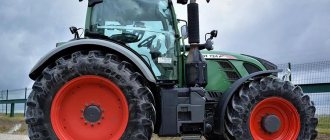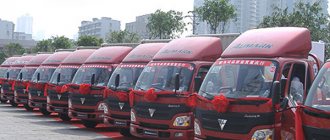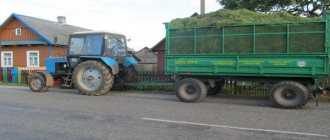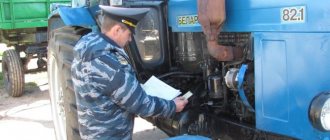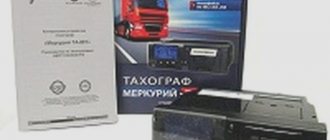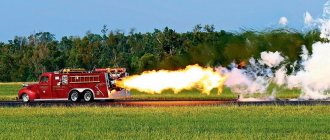A snowmobile is a vehicle designed for active recreation. Its acquisition requires compliance with a number of rules and obligations. In order to be able to drive such a machine, you must obtain a snowmobile license. You should also register your vehicle with Gostekhnadzor and undergo periodic inspections.
What licenses are needed to drive an ATV and snowmobile?
To drive legally, the driver needs to obtain a UTM - a tractor driver’s license , in which category “ A ” is open. More specifically, “ A1 ,” which allows you to control an off-road motorcycle. But it should not be confused with the motorcycle category - these are two different concepts.
If the driver does not have a UTM, the traffic police officer can not only fine him, but also confiscate the vehicle. You can return it only after receiving the certificate.
When an ATV is equipped with markers, headlights, mirrors and brake lights, a regular motorcycle license .
The first thing you need to do to obtain a license for a snowmobile and ATV is to collect the necessary documents and go with them to Gostekhnadzor .
Documents for obtaining a driver’s license of category “A1” (according to clause 18 of the Government of the Russian Federation Decree of October 24, 2014 N 1097 “On admission to driving vehicles” ):
a) statement;
b) passport or other identity document;
c) medical report;
d) Russian national driver's license (if available);
e) a document confirming completion of the appropriate vocational training in accordance with the established procedure under vocational training programs for drivers of vehicles of the relevant categories and subcategories;
f) written consent of the legal representatives (parents, adoptive parents or guardians) of a minor driver candidate for passing the exam and issuing a Russian national driver's license, certified in accordance with the legislation of the Russian Federation - in the case where the applicant is a person aged 16 to 18 years, with the exception of the case of declaring a minor person fully capable (emancipation) or his entry into marriage in the manner established by the legislation of the Russian Federation.
If the driver already has an open category, it will be easier to obtain a license, since there is no need to pass a theoretical traffic rules exam. This information will be useful to those who are interested in how to get a license for a snowmobile and an ATV if you have a category “B” license. For them the procedure is somewhat simplified.
It is recommended to check the list of documents at the place where the exam is taken.
Fines
If you use special equipment incorrectly, you risk getting a fine. If you use a snowmobile without a license, you will have to pay about 2.5 thousand rubles to the treasury. The equipment may also be taken to the impound lot. To pick up a vehicle, you will need to provide an A1 category certificate.
If the snowmobile is unregistered, you will have to pay a fine of 1.5 to 2 thousand rubles. All rules are stated in Part 1 of Art. 19 Code of Administrative Offences. The fine for officials increases to 2-3.5 thousand rubles, and for legal entities – to 5-10 thousand rubles.
If the snowmobile is without state signs, the fine will be 500-5000 rubles. You may also be deprived of the right to operate a snowmobile for a period of 1-3 months.
If you do not have a technical inspection ticket, you will be fined 800 rubles. You may also be deprived of your rights for a period of 1-3 months. If you are caught driving a snowmobile while drunk, you will have to pay a fine of 30 thousand rubles. In addition, you will be deprived of your rights for a period of 1.5-2 years. All this time the vehicle will be in the impound lot.
How is an ATV different from a quadricycle?
Relatively recently, the traffic police carried out a reform, which resulted in the appearance of category “ B1 ” in the rights. It allows you to control a tricycle and quadricycle . It must be said that the latter name differs from an ATV in a number of fundamental ways. An ATV is an all-terrain vehicle with a seat, motorcycle-style steering wheel and riding position. Whereas a quadricycle is a motorized vehicle whose maximum design speed is at least 25 km/h . It has four wheels and is used on public roads.
The category of quadricycles includes a variety of light vehicles that are practically impossible to find on domestic roads. Our analogue of such machines can be called “ disabled cars ”, which were common in the era of the USSR. And a license that allows you to drive an ATV is not valid for an ATV or snowmobile. The rule also applies in the opposite direction.
Movement Basics
The first thing a beginner needs to practice is the simplest elements of movement. The rider must learn how to start off correctly, use the gas and brakes, gain and maintain speed, and turn. We will start with these nuances.
Speed up
There is a gas trigger on the right handle. It is pressed with the thumb of the right hand. It works the same as on any other vehicle: the stronger the pressure, the more gasoline is supplied to the engine, and the higher the speed. And vice versa: if you release the trigger, the throttle valve will close and the speed will begin to drop. If you've ridden a motorcycle, ATV, or car before, the snowmobile trigger will take some getting used to, especially since you'll have to use thick gloves to press it.
Please note that the throttle triggers will operate differently on different classes of snowmobiles. For example, light mountain snowmobiles with a powerful turbocharged engine have very sensitive gas, so you need to press it very carefully and smoothly. And vice versa: on economical utilitarian snowmobiles like the Varyag 500 or Buran A, the acceleration is slower and calmer.
The first thing you need to learn is starting from a stop and simply driving in a straight line with proper gas and brake operation.
The conclusion is this: you need to get used to the throttle trigger of a particular snowmobile in order to understand how it reacts to pressure. To do this, you just need to slowly ride through a safe open area.
Braking
The snowmobile's brakes are located on the left side of the steering wheel and are pressed with your fingers. However, they are not always needed: if there is enough space ahead and the speed is low, you can simply release the gas. A car can travel a few hundred meters more on smooth asphalt at a speed of 40-50 km/h, but a snowmobile will stop much faster, because it will be slowed down by snow.
The brake lever is usually used to slow down or for emergency braking. You should press it lightly and smoothly, especially at high speed - otherwise you can go into a skid. It is best to use the brake in measured doses: pressing lightly and releasing quickly, so as not to completely block the track.
Control elements of the “Taiga Patrol” snowmobile: thumb throttle trigger on the right handle, brake handle on the left handle, gear shift knob under the left handle
The process and intensity of braking will depend on:
- the speed at which braking begins;
- force on the brake lever (press harder and stop faster, but if you press it sharply at high speed, the snowmobile may skid or lose control);
- the weight of the snowmobile (not the rated one, but the real one: a snowmobile with a passenger or cargo in tow will slow down faster than with just a driver);
- the length of the caterpillar and the number of lugs (the more lugs, the longer they are and the longer the caterpillar itself, the faster the snowmobile will slow down);
- slope of the road (when driving uphill, the snowmobile will stop faster than when driving downhill);
- body position (if you ride sitting and tilt your body back, increasing the pressure on the track, you can stop the snowmobile a little faster, but you need to learn this);
- snow density: on compacted snow, a snowmobile will slow down longer than on loose, untouched snow.
The conclusion is the same as when working with gas: you will have to get used to braking in different conditions.
Gear shift
You need to change gears after the snowmobile has come to a complete stop. The shift knob is located next to the steering wheel - on the right or left, depending on the model.
Most models have the following gears:
- neutral - needed to warm up the engine and belt;
- reverse - to go backwards (on some snowmobiles, reverse gear is activated not with the gearshift knob, but with a button on the steering wheel);
- parking brake;
- front low gear - needed for slowly overcoming difficult areas or for towing, low gear speed is up to 20 km/h;
- front high - universal gear for forward movement.
Some snowmobiles may have a different list of gears: for example, there may be no parking brake or reverse, or there may be only one gear - “general”.
Entering a turn
Before turning, you should slow down (if you were driving fast), and you need to enter it in a smooth arc. Sharp turns at high speed, especially on snowmobiles with narrow tracks and small ski clearances, increase the risk of the snowmobile falling on its side.
It is clearly visible that the rider leaned in the direction in which the skis were turned
If you still need to turn sharply (for example, there is a large obstacle ahead) - when entering a turn, you need to lean in the direction opposite to the turn in order to leave the center of gravity higher, and not throw it towards the ground.
Position of the body and legs when riding
The usual body position when driving is sitting on a chair
, legs bent at the knees and standing on the footrests. If you're not driving very fast, you won't have to change your position. But in some situations, moving your core, even while sitting, can be useful. For example:
- when riding uphill, you can tilt your body forward, pressing your skis to the snow;
- when driving downhill, you can lean back, straightening your arms;
- when entering a turn, you can lean in the direction opposite to the side of the turn (for example, if we turn left, the snowmobile will roll to the left, which means we need to lean to the right).
A more active option is when the driver stands on bent legs
. This position is good because:
- allows you to better see the road ahead and to the sides;
- the center of gravity is higher - which means that all techniques (tilting the body forward, backward and to the sides) will give a greater effect.
The higher the rider stands, the higher the center of gravity “rises”, and the greater the effect his body position will have. Riding half-bent is best practiced only by experienced riders, and only in special snowmobile boots that improve traction with the footpegs. You need to get used to it at low speed.
Another version of the pose is to stand with one knee on the seat and keep the other leg on the footrest.
. In this position, the driver better “presses” the track to the snow, which is indispensable in deep snowdrifts. But it’s better to ride this way only on straight sections or on sections without sharp turns - if you lose your balance, it will be easier to fall towards the “empty” step.
The rider stands on the snowmobile with his right knee, his left foot is on the footrest
And the last option: stand up completely
on the steps. This position allows you to have a good look around. But you can only drive standing at a very low speed, and only if the road ahead is straight and clearly visible.
Handling depending on track width
This point especially applies to those who have already ridden a snowmobile with one track width and then switched to another. For example, I rode a 400mm and then switched to a 500 or 600mm.
The width of the track greatly affects handling. A narrow caterpillar squeezes out snow like a wedge - that is, its edges are “bent” up, and the middle is slightly pressed down. This allows you to stay more stable on dense packed snow. But on such a snowmobile it is easier to bury yourself in deep snowdrifts.
But with wide tracks (500 and especially 600 mm), the opposite is true: the sides of the track are pressed deeper than the middle of the profile, which makes the track slightly convex. In deep snow, at low speeds and without sharp turns, this is not felt, and the snowmobile rides confidently. But during sharp maneuvers, especially during short, frequent turns, if you are not used to it, you can tilt.
How to pass the exam at Gostekhnadzor
In general, the examination test is similar to a similar procedure in the traffic police, but there are differences:
- the exam is divided into two parts: theoretical and practical ;
- the theory will have to be passed using tickets approved by the Ministry of Agriculture of the Russian Federation;
- If you weren’t able to pass the exam right away, you can do it next time in seven days . And if the third attempt does not lead to anything, you will have to undergo additional training;
- practice is also divided into two parts: first the circuit, and then the city .
At the autodrome you will have to ( clause 13 of the Decree of the Government of the Russian Federation of October 24, 2014 N 1097 “On admission to driving vehicles” ):
- start from a place on an overpass ;
- drive into the garage in reverse using the mirrors as a guide;
- unfold in confined spaces;
- emergency stopping and braking at different speeds;
- mount a trailer.
The city checks:
- Traffic rules;
- driving skills in various difficult traffic situations;
- how the driver complies with the rules for operating the vehicle .
In general, passing the driver's license exam at Gostekhnadzor is much easier than at the State Traffic Safety Inspectorate, and almost all applicants receive a certificate the first time. This is explained by the lower degree of danger and responsibility when driving these types of vehicles.
Obtaining a certificate
Having figured out what category is needed for a snowmobile, consider the stages of obtaining rights in the new legislative changes:
- Pass a medical examination.
- Pass theoretical and practical exams at an educational institution.
- Submit documents and pay the state fee.
- Pass a theoretical test, as well as a driving test in the presence of a State Technical Supervision inspector.
- Get your license.
The certificate is issued to persons over 16 years of age. To obtain rights you need to prepare the following documents:
- passport of a citizen of the Russian Federation;
- 2 photos, size 3x4;
- statement;
- receipt of payment of state duty;
- evidence that you have attended a driving school;
- driver's license;
- certificate from a medical institution.
ATV driver's license
When a potential driver begins to deal with issues of obtaining a vehicle license, in 2022 the price of training to obtain an ATV license may differ for different categories of citizens. Training will be needed for those who are not confident in their own abilities and want to gain knowledge under the guidance of a specialist. And also for those who failed the exam three times and need training. Also, its cost varies depending on the region of the country.
| Region | Tuition fee, rub. |
| Moscow region |
|
| Leningrad region | 5,800 (training lasts 10 days) |
| Krasnodar region | 15,000 (course lasts 3 weeks and includes theory and practice) |
| Yaroslavl region | 5,000 (course is 20 hours) |
| Volgograd region | 12,000 (3 weeks) |
| Ulyanovsk region | 10,000 (full course – 3 weeks) |
| Tver region | 5,200 (2 weeks) |
| Sverdlovsk region | 5,000 (course lasts 20 hours) |
| Chelyabinsk region | 7,200 (1 month) |
| Rostov region | 5,000 (1 week) |
| Nizhny Novgorod Region | 10,000 (14 days) |
| Tula region | 7,000 (30 lessons) |
| Karelia | 10,200 (duration of classes 3 weeks) |
On average, the time that will have to be spent on training will be approximately three weeks, and its current cost is 7,000 rubles . The state fee that must be paid when receiving a certificate on paper is 500 rubles , and on plastic - 2,000 rubles ( clause 43, part 1, article 333.33 of the Tax Code of the Russian Federation ). The validity period of the rights is ten years. If you operate an ATV or snowmobile without a license, then the fine for violating the law will be from 5,000 to 15,000 rubles ( Clause 1, Article 12.7 of the Code of Administrative Offenses of the Russian Federation ).
There are different ways to obtain training for qualifying exams. One of them is independent, as mentioned above. This method involves acquiring knowledge externally. Well, training under the guidance of specialists can be completed at the appropriate training center under Gostekhnadzor. A regular driving school does not provide training to obtain the required category of license.
Registration and technical inspection
You must register your snowmobile within 10 days from the date of purchase. This can be done by both the buyer and his authorized representative. In the second case, you need to provide a power of attorney certified by a notary.
To register a snowmobile, you will need the following documents:
- passport of a citizen of the Russian Federation;
- snowmobile passport;
- receipt of payment of state duty;
- statement of registration requirement;
- quality certificate for the vehicle;
- MTPL insurance policy;
- contract of sale.
You will have to pay 2,400 rubles for registration. Afterwards, regular technical inspection is required - at least once every 365 days. You will need to pay the state fee every year and write applications to Gostekhnadzor.
The inspection can be carried out at the location of the vehicle. The inspector does not have the right to refuse to come to your home.
What to do after passing the exams
It is recommended to proceed as follows:
- After completing the training and successfully passing the examination test, you need to collect additional documentation . The list of required papers can be obtained from Gostekhnadzor.
- Pay the state fee. This can be done at any bank branch, terminal or ATM, as well as using a variety of online systems and electronic wallets.
- When the documents have been collected, you should contact an employee of the institution and make an appointment . This can be done either by visiting the institution in person or by calling.
- At the appointed time, the employee will receive all the documents and begin checking them for subsequent registration of rights .
- If during the check no violations were revealed and everything is in order, in about half an hour the driver will receive a license .
Payments
It is important to pay attention to the cost of training and payment of state fees.
The fees depend on which training center you choose:
- A full course, consisting of theoretical and practical parts - 7-10 thousand rubles. This price includes a theoretical course and 10 practical lessons. There are also driving schools where each lesson costs about 700 rubles.
- Theory. For the entire course of two-week or month-long training you will have to pay 5-7 thousand rubles.
- Distance learning. This option is preferred by drivers who have a driver's license. The cost of DO is about 5-9 thousand rubles.
It is important to pay the state fee. If you want to get your license on paper, you need to pay 500 rubles. If you want the rights to be on plastic, pay 2 thousand rubles.
What is special about category A1 rights?
Those who have not had time to study in detail the rules for obtaining a UTM have a superficial idea of what categories of ATV driving licenses still exist. You need to know that a regular driver's license does not have categories for ATVs. It, as stated above, can help with passing exams for registration of UTM and nothing more. But in the so-called “ licenses for tractor drivers ”, there are two categories - “ A ” and “ A1 ”. However, they do not overlap with the same points on the licenses that are issued to moped and motorcycle drivers.
Category “ A ” allows you to drive vehicles that are used on public roads and whose speed is technically limited to 50 km/h . While category “ A1 ” refers to off-road motor vehicles, including ATVs, snowmobiles, and so on.
The most common motor tractors fall into this category. The emergence of licenses with category “ A1 ” is due to a significant increase in such vehicles on Russian roads. The response to this phenomenon was the legislative regulation regarding ATV drivers, which helps guarantee the safety of other road users.
Cost of obtaining a V/U
Prices for obtaining a driver's license category A1 vary depending on the place of receipt.
| City | Driving school/website | Price |
| Moscow | Central driving school of Moscow | from 15,000 rubles |
| Moscow | Driving school of the Ministry of Foreign Affairs | from 12500 rubles |
| Saint Petersburg | Driving school "Bonus" | From 10,000 rubles |
| Samara | Driving school "Leader" | From 9900 rubles |
| Ekaterinburg | Driving school "Prime-Auto" | From 10,000 rubles |
| Volgograd | Driving school SAI | From 5900 rubles |
| Tver | "City driving school" | From 11,000 rubles |
Thus, the price range in different cities reaches 8-9 thousand rubles.
Snowmobile driver's license
Not every snowmobile owner has the appropriate licenses. And this can be considered a violation of the law. Meanwhile, obtaining a license to drive a snowmobile is an easier procedure than passing an exam at the traffic police.
This vehicle is usually classified as an entertainment vehicle. Many people perceive them as sleds - only very large and with a motor. However, using it without permission is now prohibited . You will need to pass an examination test for a category that legally approves the driver’s right to drive a snowmobile. This will allow you to move freely on the roads and eliminate unpleasant thoughts about possible fines. After all, if a driver who does not have a tractor driver’s license is stopped by law enforcement agencies, the result will not only be the loss of a large sum of money. Another prospect is the seizure of an expensive vehicle. It will be possible to return the snowmobile only after obtaining an A1 .
Is registration required for a self-propelled vehicle?
After purchasing a snowmobile, it must be registered with the State Technical Supervision Authority within 10 days.
Otherwise, the owner will receive a fine of 1,500 to 2,000 rubles. For legal entities, this amount will be even more impressive - 5,000-10,000 rubles.
So the procedure for registering a snowmobile is necessary. The amount of transport tax on some models can reach significant amounts, depending on the power of the equipment.
Failure to undergo a technical inspection or failure to pass it on time will also result in a fine. You can go through it in order of priority at traffic police departments or at commercial organizations that have a license for such activities.
Thus, driving a snowmobile, in addition to attentiveness and caution, requires the driver to have a full package of documents with him:
- driving licence;
- registration certificate;
- a document indicating that a technical inspection has been completed.
The registration procedure consists of the following steps:
- Insuring the mechanism and obtaining a compulsory motor liability insurance policy, if necessary. Not required for equipment with a design speed equal to or less than 20 kilometers per hour.
- A trip to the Gostekhnadzor department to receive an application and payment details.
- Collection of necessary documents and payment of fees.
- Contact the Gostekhnadzor department with a list of required papers.
- Acceptance of documents for registration.
- Obtaining registration documents:
- state registration plate;
- PTS with a registration mark;
- registration certificate.
Documents required for the procedure:
- application of the established form;
- passport of the self-propelled mechanism, where the owner is indicated;
- purchase and sale agreement and transfer and acceptance certificate indicating numbers;
- certificate of conformity;
- transit state registration plate, if available;
- owner's identification card.
Since the beginning of 2015, the total cost of such a public service as snowmobile registration is 2,350 rubles.
The nuances of obtaining a license for a snowmobile
If the owner of the vehicle has a license with category “ A ”, obtained before 2000 , and also owns a special confirmation card, an additional category can be opened without passing an exam. You will only need to pay the state fee.
When a serviceman needs to obtain this document, he can do this where the military unit to which he is assigned is currently based.
Sailors, citizens of other countries, and refugees are in a special position when obtaining a certificate. Such categories of citizens can take the exam only directly to the chief inspector of Gostechnadzor in a certain subject of the country. The exam assignments can be obtained from the same organization.
Driver requirements
The most frequently asked question is: at what age can you drive an ATV? You can get your license at 16 years old. Candidates must complete training and pass an exam. Only those who have passed a medical examination are admitted.
The future driver must have a passport, a medical certificate in form 083, as well as a document confirming successful passing of the exam
The issuance of a license will be denied if the candidate:
- Sick of alcoholism, drug addiction;
- Glaucoma and mental disorders were detected;
- He suffers from epilepsy;
- Problems with the endocrine system, hearing impairment.
Not all diseases are included in the list.
Is it possible to buy a license for a snowmobile or ATV?
As practice shows, in our time you can buy absolutely everything - including a tractor driver’s license. Another question: is it worth doing? This solution has both pros and cons.
The positive aspects are that you will not have to waste time waiting for the document to be completed. There is also no need to study and pass an exam.
Negative side: the cost of ready-made licenses is much higher than legal training. This document is not entered into the state register and database, and this is fraught. If a driver with such a license is stopped by a traffic police officer who discovers the fact of counterfeiting , the snowmobile or ATV is confiscated, a fine is imposed, and the driver must pass an exam.
What should a driver do in emergency situations?
Even on a leisurely ride over a short distance, a rider may encounter various unusual conditions. We'll tell you how best to deal with them.
Snowmobile buried in snow
You can get stuck if you drive into too deep loose snow and try to slow down there, or, conversely, sharply accelerate. You can also get stuck if the track is damaged.
The most important rule, if the snowmobile is already stuck, is not to try to turn the gas to maximum. If the move is lost, you can only bury yourself deeper.
We proceed as follows:
- if you were traveling with a passenger, the passenger gets off;
- if there was any cargo on the snowmobile, it needs to be removed;
- we shovel the snow around the snowmobile (if there is no shovel, you can do this with your hands, or swing the snowmobile left and right);
- not necessary, but also possible: with your hands, with the engine turned off, remove the snow from the track (both on the sides and inside).
After this, you can either pull the snowmobile from the front by the suspension arms or bumper, or, if it is not heavy and you were not riding alone, you can simply lift it and take it out of the hole. Also, after digging, you can try to simply drive out on your own, especially if the snowmobile is not buried deeply.
Snowmobile falls on its side
If the snowmobile begins to fall on its side, the ideal option is to jump in the direction opposite to the fall. Even light equipment without a load weighs under 200 kg, and if it falls on your leg, at best there will be a bruise. It is especially dangerous to fall when driving on a slope.
In the photo, the snowmobile is tilting to the left side, the rider is trying to balance the roll by leaning his body to the right
However, in practice, it is rarely possible to react to a fall and jump in the right direction, even at low speed. Therefore, other options are possible:
- Jump back. Not a very successful and not a very safe way to escape, because you can get your boots caught on the steps and fall.
- If you have to fall in the direction of a snowmobile overturn, do not stop, but roll through the snow as far as possible or run away (if you land on your feet). A few hundredweight, falling on its side, will not be dragged very far through the snow. Therefore, every extra meter can save the rider’s health.
The snowmobile can fall on its side if it turns into a turn too quickly, or if there is a sharp misalignment between the skis. For example, one will drive through a deep hole or hit a bump at high speed. It also happens that riders overwhelm their equipment when riding up or down a slope when trying to stand up or sharply turn the steering wheel while moving along the slope. Such situations should be avoided.
Riding with a passenger
When riding with a passenger, the snowmobile will accelerate more slowly, its top speed will be lower, and it will be more difficult to maneuver. The main rule is that you need to take turns even more smoothly.
The passenger sits upright, holding with both hands specially designed handles on the sides
When driving fast, it is advisable for the passenger to press his body against the driver and wrap his arms around him. This way the passenger can lean with the rider in the direction of the turn. In other cases (if you drive slowly, without sudden maneuvers), the passenger should hold on to the handles.
Driving with a load in tow
The first rule is that you cannot brake sharply even at low speed, otherwise the load will simply drive into the snowmobile from behind. Secondly, you can’t take turns sharply either. The load may fly off the road and crash into something. Or, if the load is heavy enough, it may pull the snowmobile and spin it around.
Movement in a group
In a group, it is important to move in a chain - with a leader and a trailing one - and maintain a safe distance between snowmobiles. Before the start, all participants must know the planned route and destination. If the route is well known, an experienced rider should tell you about the speed limit and dangerous sections, if any.
It can be seen that snowmobiles are moving in a chain one after another
If all group members do not have a headset in their helmets, signals are transmitted by hand:
- left hand raised up - stop;
- left arm extended parallel to the ground - turn to the left;
- arm bent at the elbow at a right angle, parallel to the ground from shoulder to elbow - turn to the right.
Signals must be transmitted along a chain - because due to the distance (as well as due to road turns, slopes, poor visibility), not everyone will see the leader, but only the rider following him. For example, if the leader decides to stop and raises his hand up, this gesture must be repeated by all group members.
Movement on snow of different densities
Deep untouched snow.
Most often found in fields and forests. On it, the snowmobile can tilt from side to side, and in loose areas it can slip and “sink.” Therefore, you should hold control confidently and be ready to act quickly: lean your body, jump off the snowmobile, change the direction of driving.
Packed dense snow
. If the snowmobile is not intended for densely packed snow, it is advisable to drive slowly, without sudden acceleration and braking.
Soggy snow
. Soaked snow is heavy, easily crumpled, ice can be hidden under it, and if the snowmobile is loaded, you will have to dig it out while standing in the water. Therefore, such areas are dangerous for any snowmobiles. They can be identified by the darkened track that remains behind the skis and track. Even on wet snow, the speed decreases, since it is harder for the lug to throw away heavy lumps. Therefore, if you notice such a section ahead, we go around it. If this fails, or if you are already on it, we determine the shortest path to the “drier” snow, and drive in a straight line, ideally without slowing down.
Darkened areas easily reveal wet snow
Ice
. Ice should be avoided: neither the track lugs nor the skis are designed for it. Of course, they won’t break, and you can drive on ice, but driving a snowmobile on such an area will be much more difficult. The main rules are to drive through ice slowly, without making sharp turns, without accelerating, and under no circumstances allowing emergency braking.
Areas with asphalt or soil
. Driving in areas without snow can overheat the engine (because it is usually cooled by snow) and damage gliders and skis. And it’s almost impossible to control a snowmobile on asphalt and ground. Therefore, such areas need to be avoided. If this is impossible (for example, you need to cross a road without snow, or if you are completing a route, there is a thawed section ahead, and there is not enough gasoline to return the same way), you need to drive them in a straight line, without slowing down and, if possible, without turning the steering wheel.
Movement in different visibility conditions
Lighting is one of the main factors affecting driving safety. Moreover, both a lack of light and its excess can interfere.
Bright sunlight
It usually occurs in the mountains, and that is where it is especially dangerous - due to the bright lighting, you may not notice a stone or cliff. But even in an open field on a sunny day, you should also ride carefully: without accelerating too much if visibility is limited ahead, or if the route is not explored.
In addition to general caution, it is important to wear appropriate glasses. For a bright sunny day, bronze, brown or black lenses are suitable. But it is important to note that they impair visibility in normal or low light conditions. Therefore, if the sun goes down, you should change the lenses. A universal option is red glass: they allow you to clearly see the landscape even in medium light conditions.
Fog, twilight, snowstorm
For all these conditions, the rules are the same: reduce the speed as much as possible, turn on all the lights and put on transparent glasses. It is important to monitor the battery charge: in winter, finding yourself with a stalled snowmobile far from civilization, especially in a snowstorm, is at least unpleasant.
Movement at an angle
Uphill
. If the snowmobile is not very powerful, the rider is riding with a passenger, and the hill is steep and high, you can ask the passenger to get off and walk up. Before the race, you can accelerate slightly by picking up speed on the straight section up to the slope. In the seat, you need to either move as close to the steering wheel as possible and lean towards it, or stand up so that the skis are better pressed to the snow. If you feel that the snowmobile cannot cope with the climb, try to smoothly turn it in any direction: moving up at an angle will be easier than directly.
Downhill
. To descend from the top you need to sit further away on the seat, slightly leaning your body back. If other snowmobiles are coming towards you, wait and let them pass. We start moving slowly; accelerating, at least from the very top of a long slope, is undesirable. If necessary, apply the brake briefly: press it and quickly release it.
It can be seen that the rider leaned forward with his body while climbing the slope
Along the slope
. Driving along a slope is possible if you need to climb a very steep hill that cannot be climbed directly, or if you are moving on a large hill where the slope is everywhere. In this case, you should hold the steering wheel tighter, since it can be pulled down, ride on half-bent legs and transfer the center of gravity to the top of the slope.


